Reading Time:
Pathology
Part of the acute coronary syndrome spectrum of conditions that result from acute myocardial ischaemia
Aetiology
Atheromatous plaque rupture and total luminal obstruction by thrombus, results in transmural (Q-wave) infarction
Signs
Levine’s sign, diaphoresis, and dyspnoea
Symptoms
Central chest heaviness or tightness, heavy arms, nausea, and breathlessness.
Pain not relived by GTN.
Beware ‘atypical’ presentations (including back pain, syncope, shock, acute pulmonary oedema, especially in the elderly and diabetics.
.Investigations
Bloods: FBC, U&E, lipid profile, blood glucose, serial troponin
ECG: ST-segment elevation or new LBBB
Treatment
Diamorphine, antiemetic, oxygen, nitrates, aspirin and a thienopyridine
Priority of management is early reperfusion
Gold standard is primary percutaneous coronary intervention
.Prognosis
Prognosis with STEMI is better than NSTEMI.
50% of patients who die from acute MI do so in the first 2 hours.
Arrhythmias, LV failure, sudden death, fever, RV failure, pericarditis, pulmonary embolism, tamponade, mitral regurgitation, ventricular septal defect, Dressler’s syndrome, depression and anxiety
Key Facts
Lorem ipsum dolor sit amet, sapien platea morbi dolor lacus nunc, nunc ullamcorper. Felis aliquet egestas vitae, nibh ante quis quis dolor sed mauris.
Key Images
Lorem ipsum dolor sit amet, sapien platea morbi dolor lacus nunc, nunc ullamcorper. Felis aliquet egestas vitae, nibh ante quis quis dolor sed mauris.
Key References
Lorem ipsum dolor sit amet, sapien platea morbi dolor lacus nunc, nunc ullamcorper. Felis aliquet egestas vitae, nibh ante quis quis dolor sed mauris.
